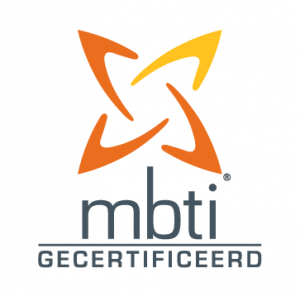Why YET and for whom?
YET discoverers

Gerard, 54 years old
As a result, I have become much more lenient towards others and dare to be myself more.

Mila, 26 years old
FOR WHOM AND WHY the MBTI 'test'?
Click on read more and scroll down for the text.
For INDIVIDUALS pursuing personal GROWTH.
Perhaps the most important realization an individual can make in their quest for personal growth is that there is no single formula that defines the path to personal growth. We all have different goals and priorities.
We also have different natural strengths and weaknesses that are part of our inherent personality type. So how can we as individuals feel stronger in our lives?
The MBTI test tool helps us realise what is really important to us. Recognizing your pitfalls and your qualities is an essential step and the first key on the road to personal growth.
While improving our self-knowledge and realizing our true goals can be very liberating, we cannot ignore the rules of the society in which we live. We could recognize that other people’s value systems are no less important than our own. And recognize and accept that we live in a society where certain personality types and behaviors are more suited to certain tasks. This is the second key that opens the door to personal growth.
For example, there are situations where it is more appropriate and effective to show compassion and caring (Feeling), rather than rationality (Thinking). Likewise, there are situations that call for rational decision, in which the more subjective point of view of the feeling function (Feeling) is inappropriate and ineffective. Individuals with a preference for Feeling have a natural advantage over Thinkers in situations that require compassion and awareness of other people’s emotions. Conversely, individuals with a preference for Thinking will have a natural advantage over Feelers in situations that require the ability to make a decision based on rational data.
As we learn more about our personality type and the types of others, we gain more insight into why people react differently in different situations. This allows us to better accept and understand people’s behavior that is different from our own.
So how are we going to realize what really matters to us? How do we recognize our weaknesses and learn not to hide behind them? How do we balance? How do we open the door that shows us the way to personal growth?
MBTI is a model that will help you expand your understanding of human diversity. A better understanding of yourself and others will help you find, follow or expand your path. An awareness and acceptance of the fact that one personality function may be more effective than another in a given situation will help you understand the relevance of personal growth to your life.

Add Your Heading Text Here

FOR TEAMS IN STARTUPS AND YOUNG, FAST-GROWING ENTERPRISES
One of the important aspects when considering the structure of a startup team is that each role should have complementary skills rather than similar characteristics. Skills are one thing; personality is another and the ability to work together as a team is an essential prerequisite for a successful startup.
The MBTI personality tool concretely helps the team to provide insight into important individual personality types and preferences and thus insight into and understanding of the behavior of the other team members. This makes it easier to create work structures that suit everyone.
Having a team structure where you mix the different preferences can be an important strength, as a situation will be thought through from different perspectives The fact that all the different preferences are active in a team can have concrete consequences. An example is a team member who thinks too much and constantly changes the scope and plan of the project – such a person needs to be restrained for stability, perhaps by providing him or her with more specific targets and specific desired results. An introvert needs to be encouraged to share and speak up or his or her ideas will be washed away in the noise of louder voices.
MBTI is therefore also a tool that can be used to work with the different preferences we have, by making us aware of them. It creates the opportunity to create a common language that can increase the quality of teamwork by creating ideal communication rules. In addition, you also gain insight into how all team members contribute – each in their own way. In this way, the MBTI tool concretely and effectively leads to improved communication and mutual respect between team members, making it easier to challenge and complement each other and to work together towards a desired result. MBTI is a powerful tool for understanding innate thought processes, and it can be used excellently to build a diverse team, especially diversity of thinking. It can be used as a stepping stone to foster an attitude of innovation and creativity. An MBTI assessment of a team can be a good starting point to know how much diversity of thought and experience you have in your team and to build the diversity agenda from there.
Add Your Heading Text Here
FOR INVESTORS (Venture Capital firms and other investors) IN STARTUPS and YOUNG, FAST GROWING COMPANIES
In the investment process of a Venture Capital firm (“VC”) or an (informal) investor, a lot of attention is paid to legal, tax and financial aspects during due diligence. Over the past few years, VCs/investors have become increasingly convinced that a good understanding of the personalities of the individual team members and therefore the ability to function and grow well as a team is an equally important aspect of the investment process. Ultimately, investments are also made (perhaps especially) in people.
More and more investors in startups and young fast-growing companies are therefore asking teams to use the MBTI tool.
A personality tool such as MBTI has proven to be an effective way to speed up the introductory process. VCs and other investors have an interest in knowing who the team members are on a deeper level. It shows concern for the people who initiated or are part of the startup, an interest in what motivates them, and an awareness that interpersonal compatibility and conflict can have a huge impact on the team’s ability to succeed. A team’s personal chemistry and balance of personality styles can greatly facilitate or hinder collaboration.
Typically, VCs/investors share the results of the MBTI report with the team members, and this provides opportunities for team building if the team can embrace the insights provided by the MBTI tool as a way to learn more about each other. These reports are shared openly with team members, can be useful tools for discussion as a team continues to grow in its work dynamics, and facilitate a deeper appreciation of each other’s strengths. When a team is willing to use the MBTI tool and discuss its results together, it can lead to better insights about ways team members can help each other and better leverage each other’s strengths.

Add Your Heading Text Here
Q&A
The MBTI® tool is often called ‘MBTI test’ but it is not a test – there are no right or wrong answers and it does not measure skills, intelligence or the likelihood of success. MBTI ® – types differ from each other, but one type is not better than another.
There is only ONE true Myers-Briggs Type Indicator®, but there are many MBTI® look-alike tools with questionnaires.
You know if you are dealing with the original, validated psychometric instrument if you see this logo.
Because reliability and validity only apply to the original version.
MBTI® is not suitable for:
Recruitment and selection, selection within teams, dismissal procedures, predicting job performance or future behavior.
The general standard for a scale on any psychometric instrument is an internal consistency of .70 or more.
MBTI® has a reliability of .87 at 15 weeks interval.
Here is a comparison with other acquaintances and renowned personality questionnaires:
- The Big Five has a mean test-retest reliability of .73 and mean estimated reliability of .81.
- The NEO-FFI (excluding the neuroticism subscales) has a mean test-retest coefficient of .79 with a 12-week interval.
- The Birkman Method has an average test-retest coefficient of .84 at an interval of 2 weeks.
The validity of the MBTI® instrument has been demonstrated in several studies and in several ways, including:
Relationship with behavior, relationship with other questionnaires, internal measurement structure, predictive value, perceived value and practical value.
For more information:
We all have preferences for all sorts of things; most prefer to use one hand over the other when we are writing something, for example. Having a preference doesn’t mean you can’t do things a different way; if you’re left-handed, you can probably write with your right hand if you need to. In the same way, we all have preferences when it comes to our personality.
The Myers-Briggs Type Indicator® helps you understand your personality preferences in four key areas:
How you get your energy (Extraversion vs. Introversion)
How you take in information and learn (Sensing vs. Intuition)
How you make decisions (Thinking vs. Feeling)
How you like to organise your time and environment (Judging vs. Perceiving)
The MBTI® identifies people who may enjoy doing a certain type of work, but not how well they could do that job. The MBTI® does not identify skills or abilities that predict success in a job.
The questions using the MBTI® are transparent – applicants can ‘come out’ any type that seems to be wanted for a job.
Coordination and alignment in advance are important. The feedback interview, the results of the questionnaire and the determination of the most suitable type are all confidential. You may want to share your type with others, but YETMBTI® is not allowed to do that.
The ® sign indicates that a trademark is protected. The ® sign originates from the USA. With this ® you can indicate that your trademark is registered and that you will act against misuse. In the USA they have a different trademark law culture than in European countries.
An MBTI feedback session can be done face-to-face or online. Whichever way is used, it is important that the feedback is interactive. The respondent must have all the time to answer the questions and be able to fully participate in the feedback interview. Feedback should never consist solely of showing the results of only the questionnaire or a written report.
Online sessions have several advantages: these sessions
– are independent of time and place
– can be done from your own familiar environment
– are in line with the 24-hour economy
– traffic jams and travel time do not apply
– are for some an accessible way of making contact.
No, providing feedback is central to the MBTI® and is essential if you want to use the instrument accurately, professionally and ethically.
The Swiss psychiatrist and psychologist Carl Jung, on whose work the Myers-Briggs Type Indicator (MBTI®) is based, believed that our preferences are innate and thus a matter of predisposition. But, he also believed that HOW we use those preferences can – and will – change.
In other words, the question of whether personality is fixed requires a deeper discussion. We all have a choice in how we use our mental energy (Extraversion-Introversion), how we gather information (Sensing-Intuition), how we make decisions (Thinking-Feeling) and how we interact with the world around us (Judging). -Perceiving). As we develop and grow, we must learn not to rely solely on that side of our preferences that are part of our natural inclinations. Instead, we need to learn how to deploy the opposite behavior when the situation calls for it – “flexing” behavior. Knowing when it is necessary to flex your personality preferences is a good indicator of development.
The MBTI® tool helps us understand our preferences so that we can “perceive more clearly and make better judgments,” as Isabel Briggs Myers wrote in her book Gifts Differing: Understanding Personality Type. The MBTI ® tool does not tell us that we are our preferences and that we then have no choice to change our behavior.
The story begins with Katharine Cook Briggs, an intellectual and well-read woman with a passion for children’s education. She observed differences between children, and she was convinced that you should stimulate children’s innate curiosity as much as possible. She has written several articles and essays on this subject. Because she was dissatisfied with the traditional way of teaching, she decided to teach her own daughter Isabel at home.
As an aspiring novelist, Katharine wanted to explore the fundamentals of personality and behavior so she could create better characters for her stories. Her interest in personality types became even stronger when she met her son-in-law Clarence “Chief” Myers. Chief saw things in a very different way than she and her family. Katharine wanted to understand him better and studied various works of philosophers and psychologists but did not find what she was looking for. Reading Carl Jung’s Psychological Types in 1923, she told her daughter Isabel that she had found what she was looking for. This was the way to describe the differences between people in a positive way. His theories bore many similarities to her own observations. She met Jung personally and developed his ideas for years. Jung was very impressed by her intelligence.
Isabel was less involved in her mother’s work during this period and had meanwhile started a career as a writer herself. The beginning of the Second World War marked a turning point. Isabel wanted to find a way to avoid conflicts in the future by helping people understand personality differences. At the same time, Isabel saw people take jobs for patriotic reasons and become unhappy with the tasks they had to perform. This was not only true for the men, but also for the women who had to fill the empty places of the men. Isabel wanted to change this and discussed her frustration with her mother. Katharine felt the time had come and suggested developing an indicator based on personality type theories. With her mother’s knowledge and her own passion to conquer the war, the MBTI was born. She enlisted the help of experienced psychometricians, and her work was later supported by professors from the universities of California, Michigan, and Florida.
Curiosity and the belief that you can achieve anything have been key ingredients in MBTI history. Isabel’s upbringing played a major role in this; as the daughter of a research physicist (father Lyman J. Briggs), she grew up thinking that ‘discovering something’ is the best thing in the world. In addition, mother Katharine encouraged her daughter to learn and do everything she was interested in. Through her own marriage to Chief, she experienced for herself how people can differ. Isabel herself had INFP preferences and Chief ISTJ. When asked why she developed the MBTI, she replied “because I met Chief.”
Through the continuous collection and improvement of the MBTI, her work has become increasingly recognized. In 1957 she signed a contract with Educational Testing Service (ETS), but in 1975 when CPP saw her work, the MBTI was officially published. Unfortunately, that was also the time Isabel was diagnosed with cancer, but even then she continued to work with enthusiasm to perfect the MBTI. She embraced the MBTI, which had become a way of life for her. Her happy marriage met Chief was thanks to the self-understanding she had gained. The MBTI made them understand each other better and she wanted to pass that on to others. Isabel’s hope for the future: “I dream that long after I am gone, my work will go on helping people.”
By completing the MBTI® questionnaire, based on your preferences, a combination of four letters is created that describes your personality type. 16 different MBTI® personality types are recognized and described.
It is always important that personality type is not the answer to everything, just one more tool to help you grow, achieve, and prosper in your life.
